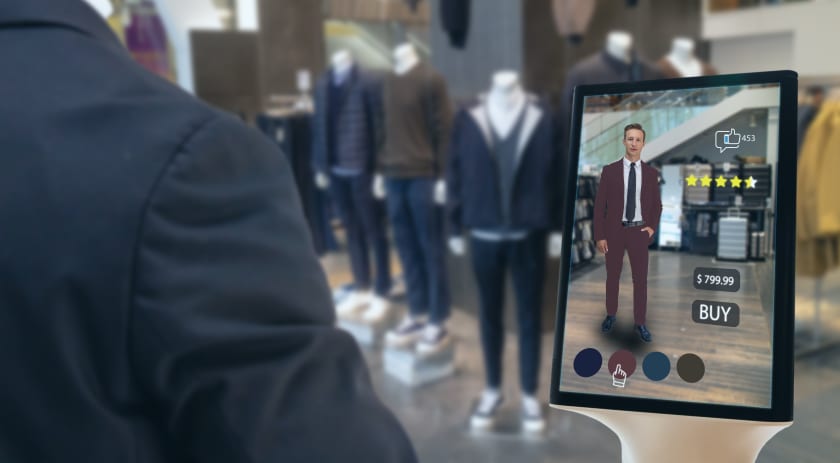Leveraging Artificial intelligence and Machine Learning for Upgrading Fashion



Summary: The machine's ability to learn by itself (ML) and further refine its decision-making capabilities (AI) has opened up endless opportunities for its application in industries. Fashion brands and manufacturers can leverage these technologies for more sustainable production.
Introduction
Technological advances are transforming fashion in more ways than it outwardly appears. From drawing sketches to predicting demand and how it is produced in the factories, there is a perceptible way in which technologies such as artificial intelligence and machine learning are making an impact. Chatbots in virtual spaces further make shopping experiences seamless.
Fashion brands that incorporate these technologies to push the limits of design, manufacturing, and retailing will come out tops in the fast-changing world of fashion.
Artificial intelligence and machine learning are so interconnected that it is difficult for a layperson to tell the difference between them. Machine learning is a subset of AI responsible for driving its development forward.
What’s artificial intelligence (AI)?
Artificial Intelligence is the ability of machines to mimic human cognitive skills such as learning and concluding by sifting through various data points. Whereas human intelligence is limited in speed, is prone to biases, and cannot make sense of a humongous amount of data at a single point, AI is constrained only by its reasoning ability.
Understanding machine learning (ML)
To recognize a T-shirt in a picture, the computer system must be fed with the data of a good number of T-shirts to identify it correctly. Machine learning uses a mathematical data model to help a computer learn without direct instructions.
Thus a computer uses Artificial Intelligence to think and decide like a human and accomplish the task independently. It’s through Machine Learning that a computer system develops the intelligence to perform the task with accuracy and speed.
Ways to Leverage AI and ML
Augment learning through the neural network
One way of training a machine to mimic human intelligence is to deploy a neural network, essentially a bunch of mathematical models called algorithms that copy the human brain. When learning happens through a neural network, it is called deep learning.
It is, therefore, not AI Vs. ML, but how they work together to achieve an objective, such as recognizing a T-shirt. This happens when the machine starts learning by itself as it is put through more data, and its cognitive ability becomes sharper in no time.

Industrial application of technology
While considering the application of artificial intelligence and machine learning, fashion is the least likely industry to pop up. Though the industry has not warmed up to these technologies, sporadic adoption of AI and ML has begun changing how fashion companies manufacture their products and how they are marketed and sold.
We see a few companies, such as Zara, surging ahead based on tech adoption, which is bound to have a ripple effect. Let’s see how the application of artificial intelligence and machine learning can benefit the fashion industry:
Predictive analytics
Forecasting fashion trends usually involves collecting manual and digital data from designers, retailers, and fashion influencers. Companies such as Stitchfit and Finery provide insightful data on future trends by collating data from the users and multiple other sources. Another company
Styleumia is helping brands forecast demand, spot trends, manage inventory, and make better decisions.
Sentiment Analysis
Brands can use sentiment analysis to identify and slot positive, neutral, and negative attitudes expressed by customers in reviews of various shopping sites to gauge the reaction to their products. The same information can also be collected using intelligent chatbots on shopping sites.
Greater customer experience
Online browsing experiences during shopping can become more accessible and interactive through AI. TrueFit uses machine learning technologies to help its customers find the perfect fit. B2B solution Virtusize helps brands develop virtual sizing tools to help customers navigate without hassle.
Reducing fashion wastage

Many fashion activities are now shifting to the digital world, from fashion shows to the sampling of products, making way for a potentially more sustainable way of making a statement by fashion brands without creating a big carbon footprint.
For instance, The Fabrikant has enhanced interactive experiences for brands by bringing photo-real and 3D imagery to the design process.
Efficient manufacturing
One of the most potential uses of AI and ML is optimizing production across the value chain by making factories achieve manufacturing excellence and cutting down on waste.
AI vision for quality assurance
AI vision technologies can spot defects in fabric, identify errors during the manufacturing processes and match the colors of the finished product with the approved sample. A broader deployment of this technology shall allow the quality assurance process to be more streamlined.
An intelligent future awaits the fashion world
Combined with the Industrial Internet of Things (IIOT), machine learning technologies are being used to expedite logistics and streamline the supply chain. There are no elements in the fashion value chain that will remain untouched by AI shortly.
The widespread adoption of these technologies across industries can achieve visibility and transparency in the supply chain. Technology gives hope for a more sustainable future.
Key takeaways
- AI and ML technologies can potentially widely apply in manufacturing and logistics processes.
- Whether automating mundane, repetitive tasks or offering creative insights, companies are seeing their role in transforming products and processes like never before.
Fashinza uses AI technologies to provide the most optimized manufacturing solutions to brands across various categories of apparel production.
Connect with Fashinza for a tech-enabled design to deliver an experience.



















